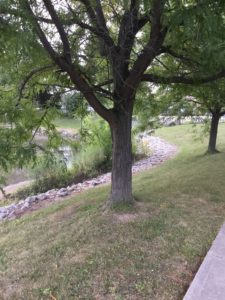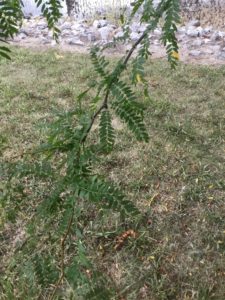Q. Can you tell me what kind of tree this is? They were planted near our community lake 25 years ago. K.M., Indianapolis
A. This is a honey locust tree, known botanically as Gleditsia triacanthos. The species is native to the eastern US. It has large seed pods and trunks that are armed with wicked thorns. Fortunately, most plants sold for landscape specimens are cultivars that are both seedless and thornless. But even these improved cultivars frequently drop small- to medium-size branches in high winds.
Q. I have a Bradford pear tree in my front yard that split in half with the recent high winds. This has occurred many times in my development over the years. Is it safe to let half the tree remain standing? If I remove the tree, what good, strong trees that are more wind resistant do you recommend?
A. Bradford pears are notorious for breaking up in high winds, but the extreme winds experienced statewide damaged many sturdier trees as well.
You would be wise to remove what is left of the tree. Bradford and all other cultivars of the ornamental (callery) pear are now considered invasive in Indiana. This is a good opportunity to replace with a better choice.
Here are links to additional information on the callery pear as well as a publication on alternatives to invasive ornamentals.
https://www.purdue.edu/hla/sites/yardandgarden/a-pearfect-nightmare/
https://www.extension.purdue.edu/extmedia/ID/ID-464-W.pdf

